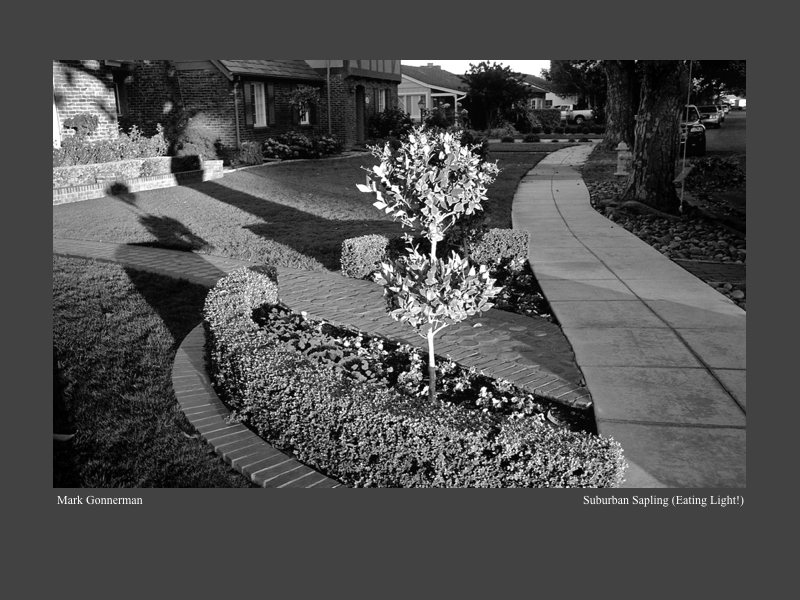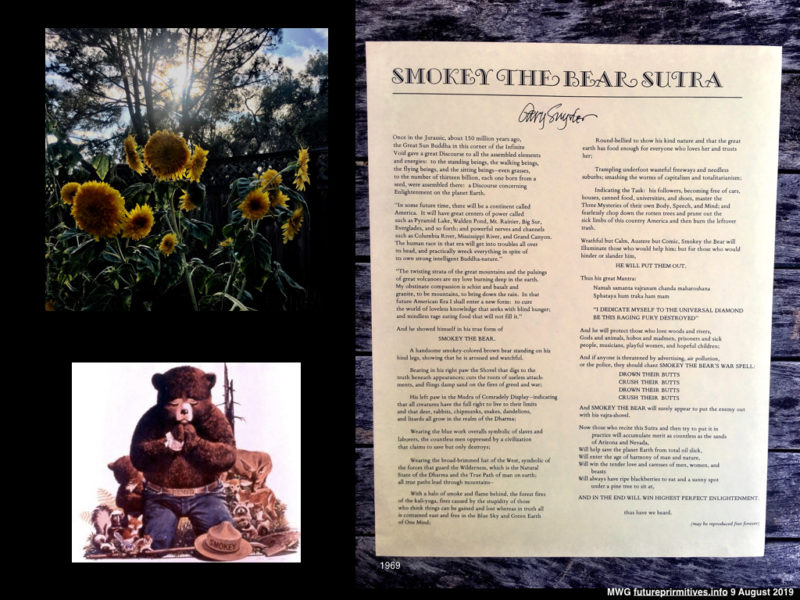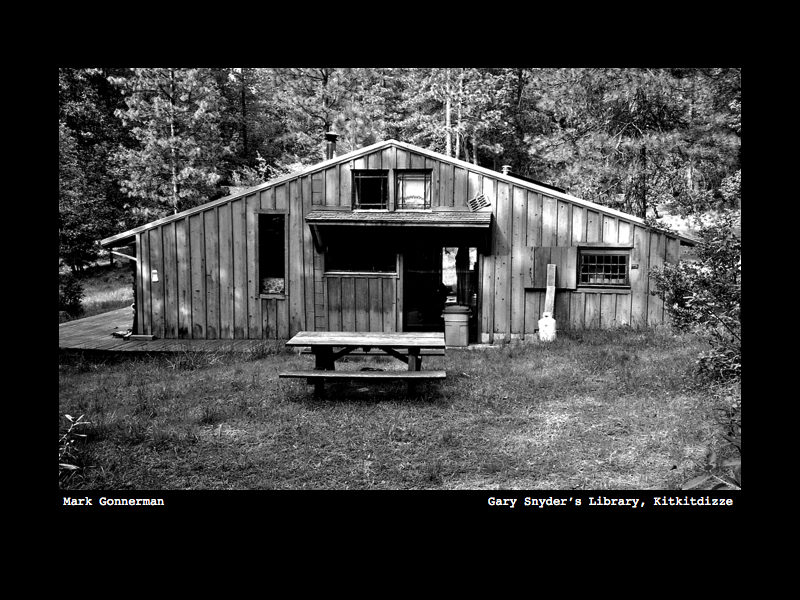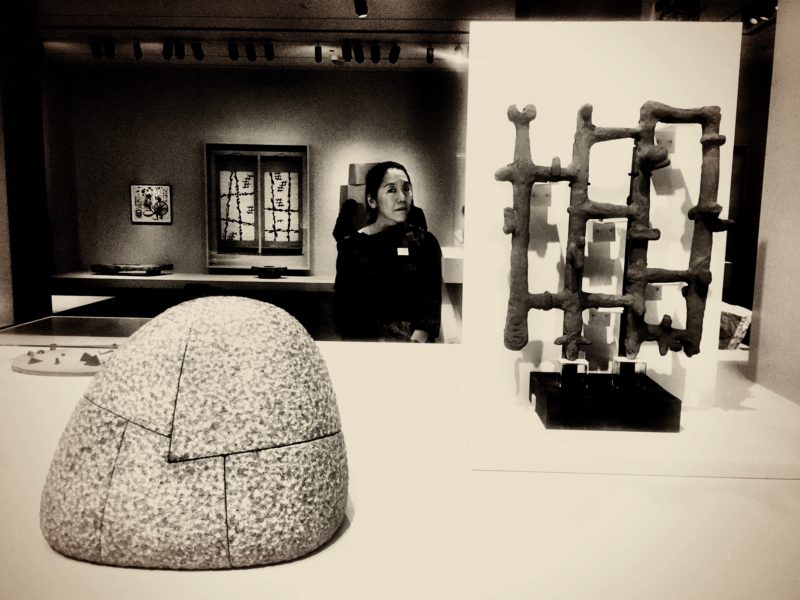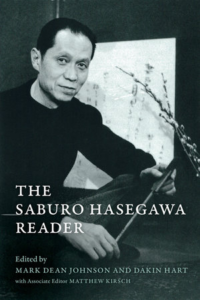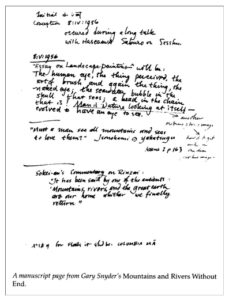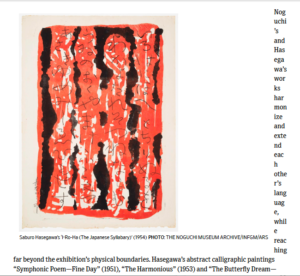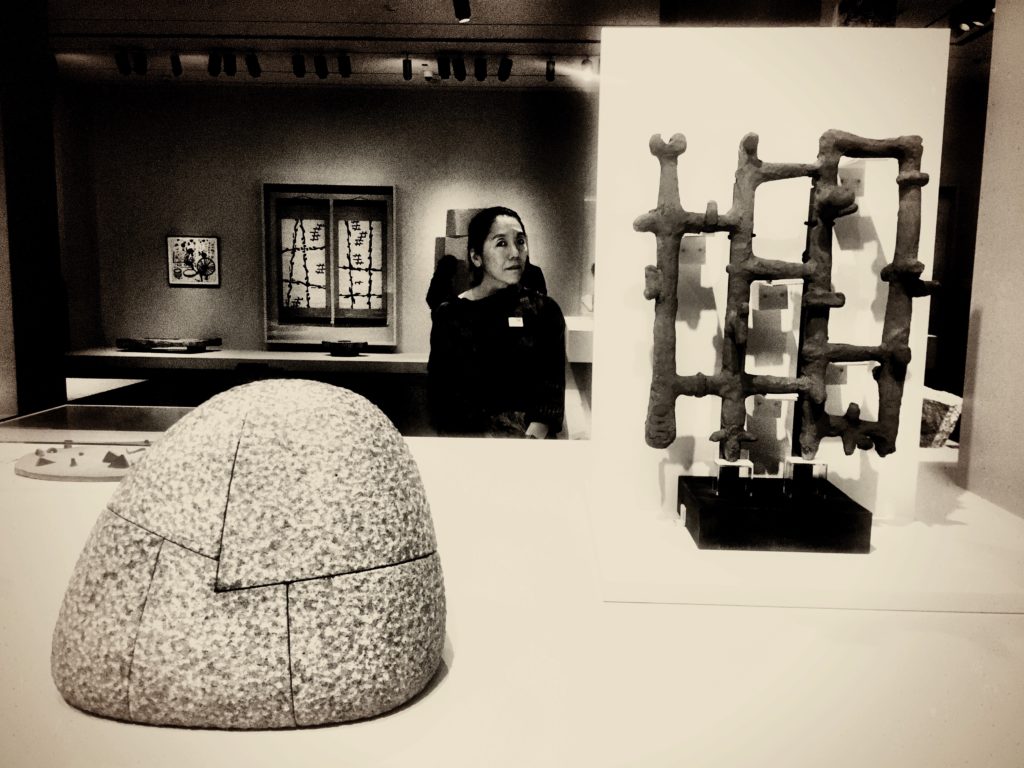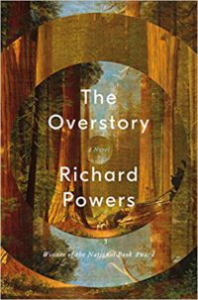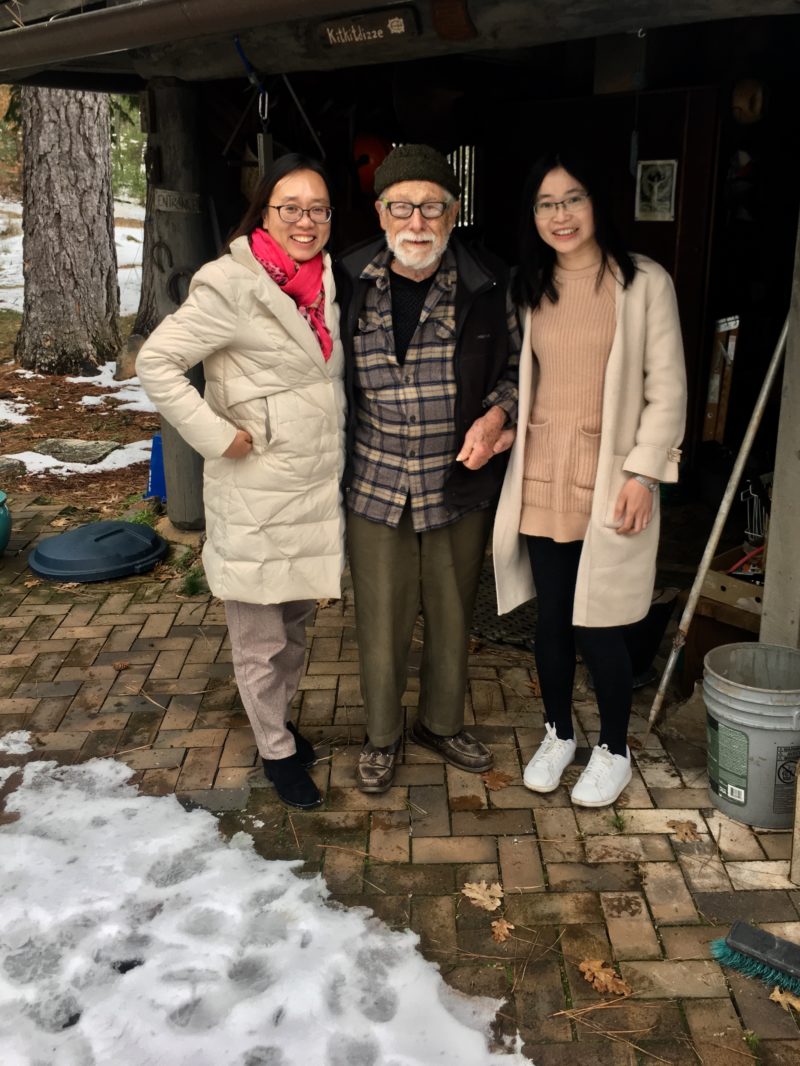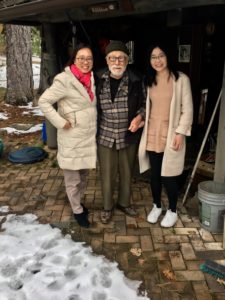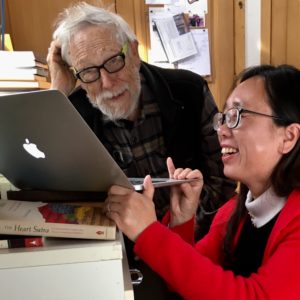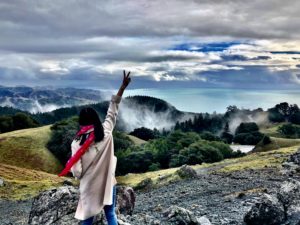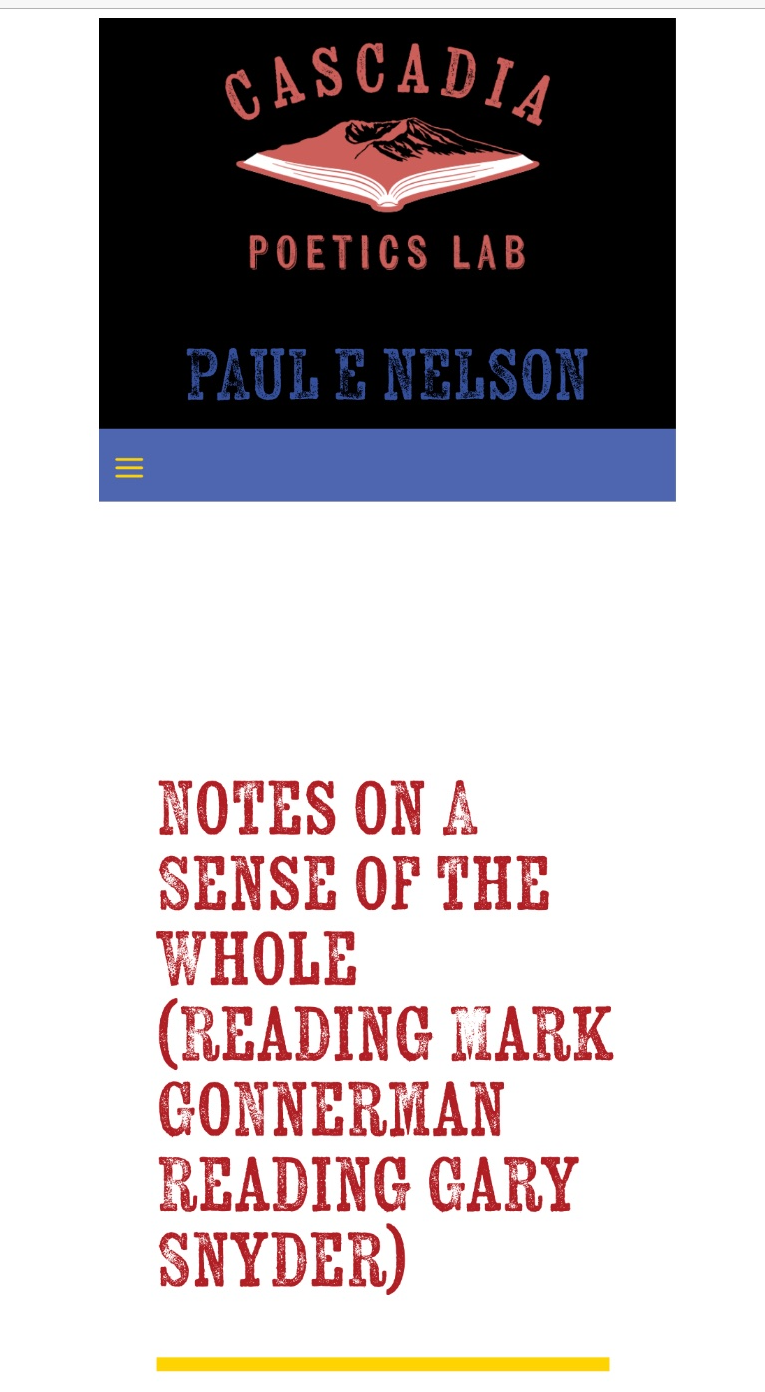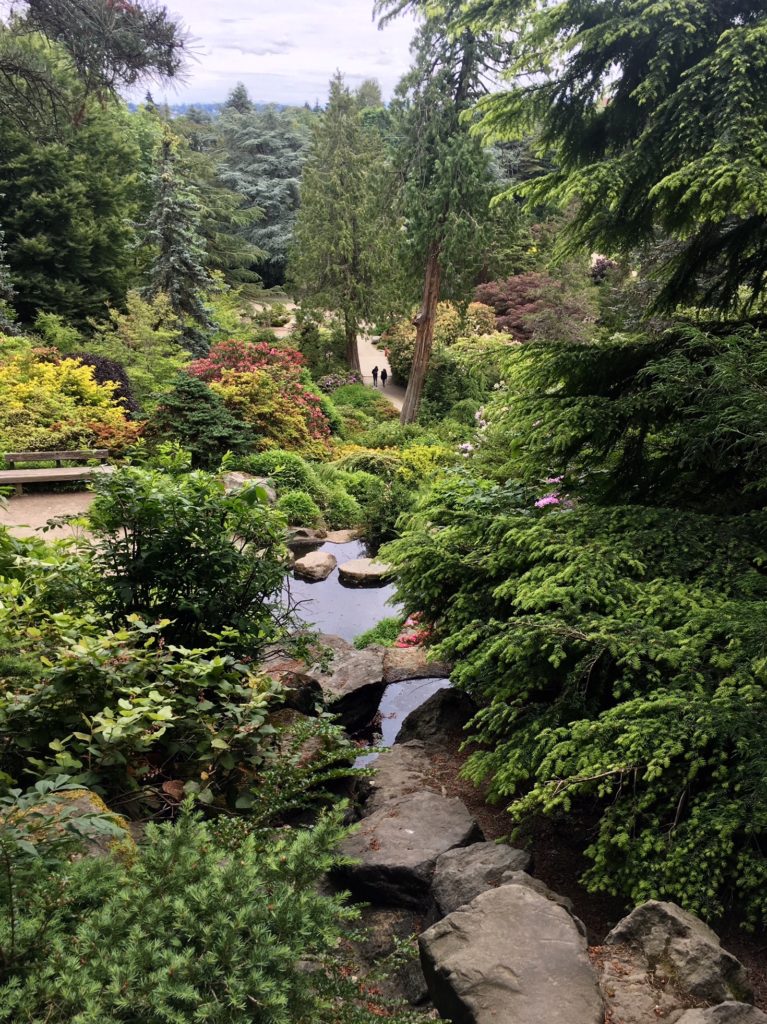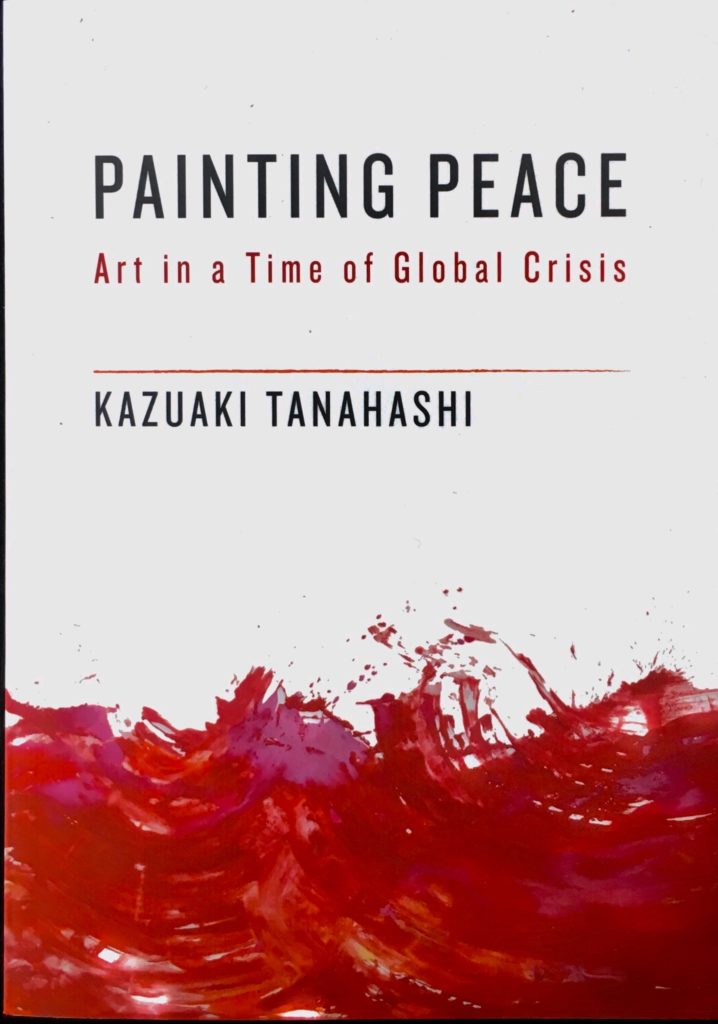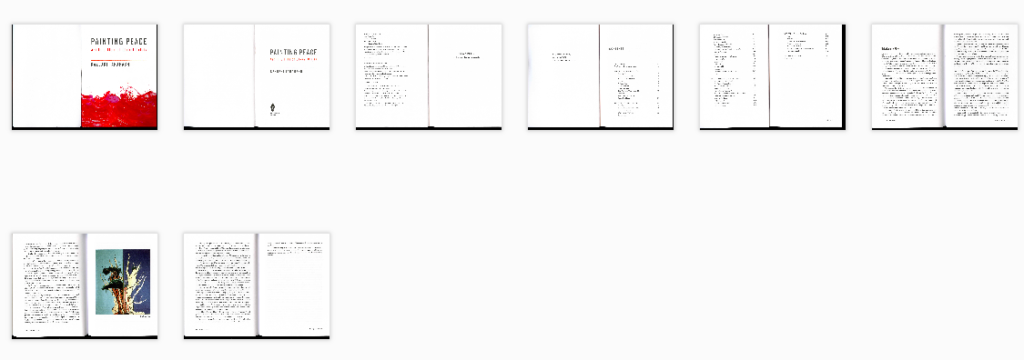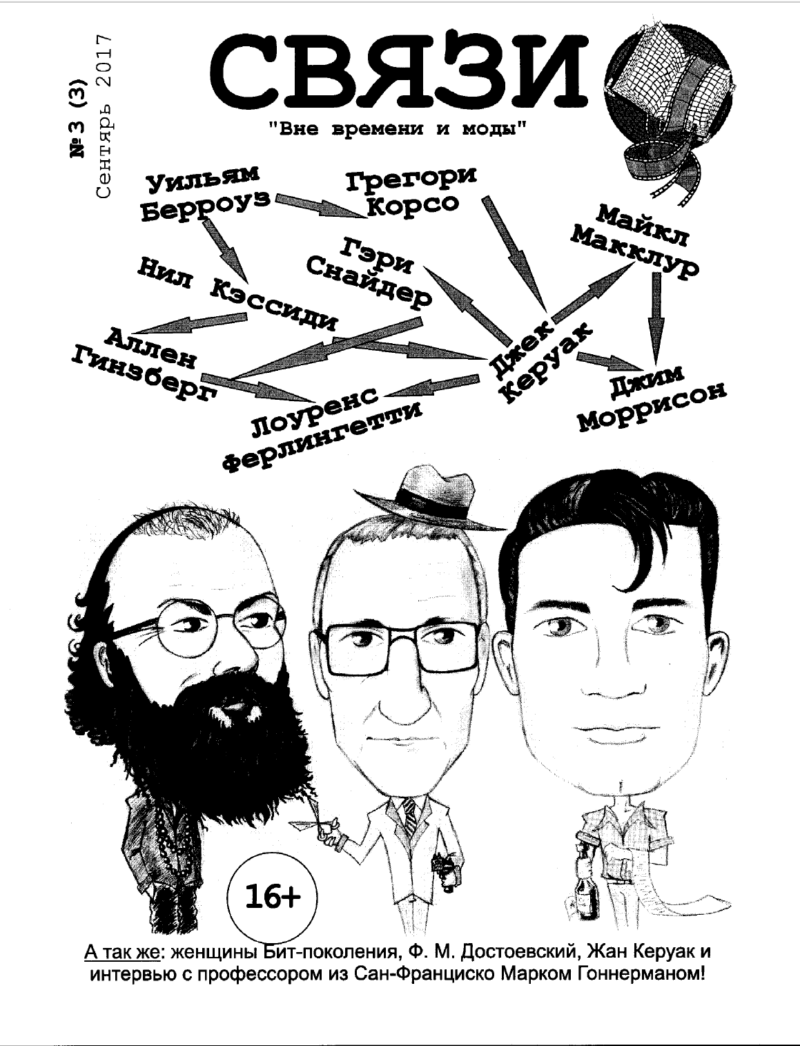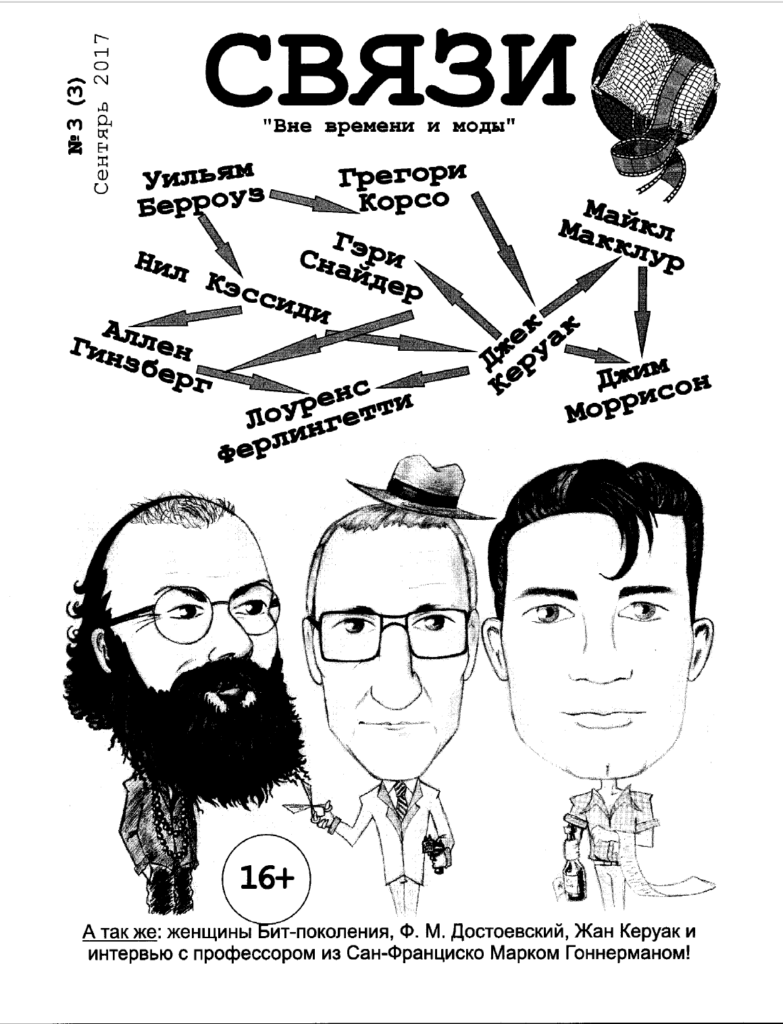This morning Meri reminded me that today is the 75th rebirthday of Smokey the Bear, so together we read out loud, antiphonally, the Smokey the Bear Sutra under the Sunflowers of Vairocana and over breakfast.
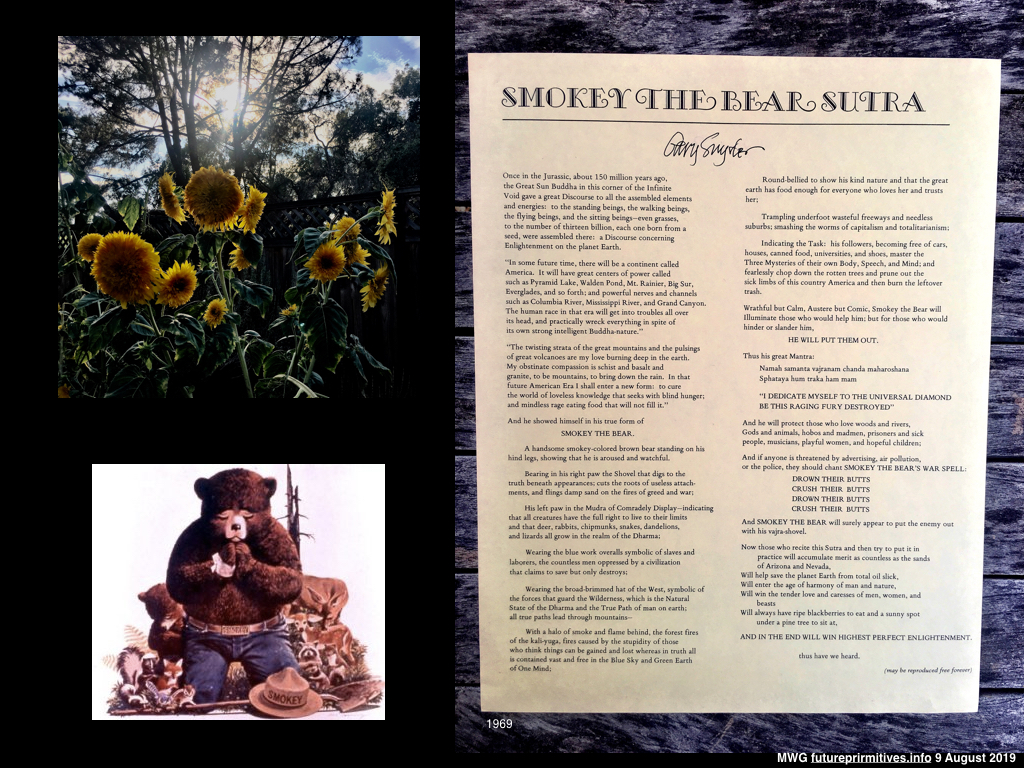
Of this Smokey the Bear Sutra, Katherine McNeil has this in her bibliography (Entry A 20):
Single leaf broadside.…Printed in black on light yellow paper. Published anonymously. According to Snyder, he had “Smokey” printed on the occasion of the Sierra Club’s Biennial Wilderness Conference in San Francisco, February 1969. He took the text to East Wind Printers and paid them $110 to print up 1,000 copies. The next day he and friend Keith Lampe distributed the broadside in the lobby of the San Francisco Hilon Hotel, site of the conference. An unknown number of subsequent printings were made [“It just goes and goes”] and the Sierra Club was the last known proprietor of the plate. The poem was later collected in the Shaman Drum Press publication The Fudo Trilogy [Entry A 46]. (Katherine McNeil, Gary Snyder: A Bibliography (New York: The Phoenix Bookshop, 1983), pp. 38–39).
So this from our library as well:
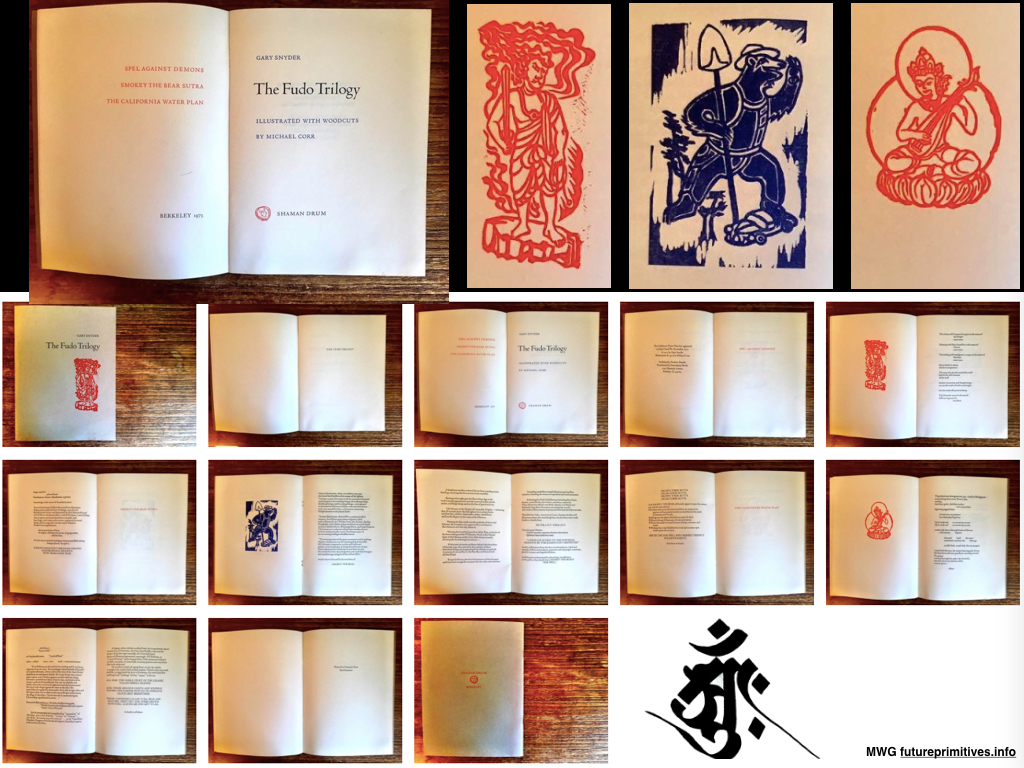
~ ~ ~
Once in the Jurassic about 150 million years ago,
the Great Sun Buddha in this corner of the Infinite
Void gave a Discourse to all the assembled elements
and energies: to the standing beings, the walking beings,
the flying beings, and the sitting beings — even grasses,
to the number of thirteen billion, each one born from a
seed, assembled there: a Discourse concerning
Enlightenment on the planet Earth.
“In some future time, there will be a continent called
America. It will have great centers of power called
such as Pyramid Lake, Walden Pond, Mt. Rainier, Big Sur,
Everglades, and so forth; and powerful nerves and channels
such as Columbia River, Mississippi River, and Grand Canyon.
The human race in that era will get into troubles all over
its head, and practically wreck everything in spite of
its own strong intelligent Buddha-nature.”
“The twisting strata of the great mountains and the pulsings
of volcanoes are my love burning deep in the earth.
My obstinate compassion is schist and basalt and
granite, to be mountains, to bring down the rain. In that
future American Era I shall enter a new form; to cure
the world of loveless knowledge that seeks with blind hunger:
and mindless rage eating food that will not fill it.”
And he showed himself in his true form of
SMOKEY THE BEAR
—Gary Snyder, Smokey the Bear Sutra (preamble)

